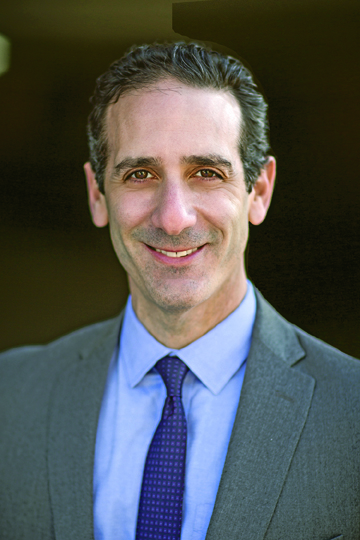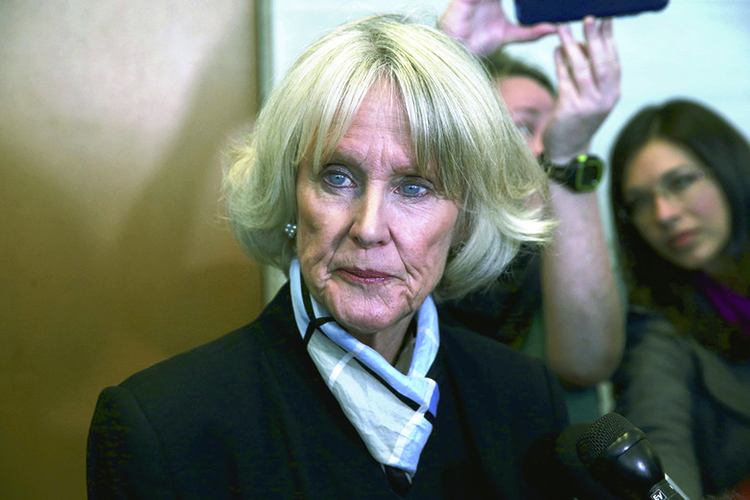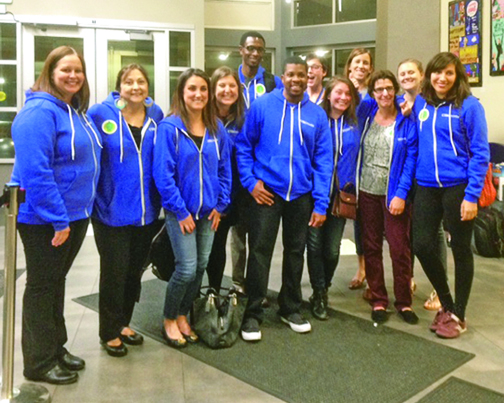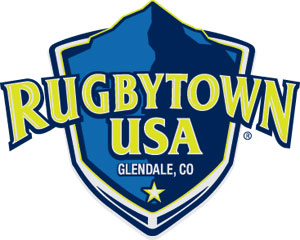
by Mark Smiley | Jul 24, 2017 | Feature Story Middle Left

 by Daniel Foster, Esq. and Michael Gates, Esq.
by Daniel Foster, Esq. and Michael Gates, Esq.
Small and mid-size business owners beware, you are in the crosshairs. After the changes in Colorado law in January 2015 opening the door to discrimination suits against employers with fewer than 15 employees, the number of claims being filed by employees against their employers has skyrocketed. Filing lawsuits against an employer has turned into a cottage industry and can be quite lucrative. (Note: if you are an employee of Foster, Graham, Milstein & Calisher, LLP you can disregard everything I am saying!)
The reality is there are many valid complaints an employee can have with his/her employer and in many of those circumstances a rational discussion between the parties can resolve most issues. Yet there are some cases that cannot get resolved and end up in court. Some make sense, many others do not. Small, and even mid-size, business owners know you are struggling to run your operations, pay your bills, fix the copier (again, ugh!), market new business, and somewhere in the middle of all of this you have a disgruntled current or former employee complaining that he/she was treated unfairly, or worse, illegally, by you or one of your managers. If you mix in a highly aggressive attorney and encouragement from friends and family, it can be a recipe for real headaches and financial strain.
So, you say, “Thanks Danny for cheering me up, but what’s a small business to do?” Great question! And many of the solutions are easy ones. As I have previously explained, our law firm, Foster, Graham, Milstein & Calisher, LLP, is fortunate to have many exceptional lawyers. One is our partner Michael Gates. Michael’s practice focuses on employment law for small and mid-size businesses and he has some words of encouragement and help for you, as well as an opportunity to learn what you can do, face to face for free. Take it away Michael.
Thank you, Danny. I will give you an example of something vexing many employers right now. In January 1806, John Adams wrote a letter to Benjamin Rush labeling Alexander Hamilton the “bastard brat of a Scotch peddler.” Adams was so fond of this label, in fact, that he used it at least twice more in correspondence referencing Hamilton. Not to be outdone, John Quincy Adams referred to Thomas Jefferson as a “slur upon the moral government of the world.” Something about apples and trees. Even across the Pond, Winston Churchill on Prime Minister Clement Attlee: “He is a modest man with much to be modest about.” Benjamin Disraeli said of William Ewart Gladstone, “[i]f Gladstone fell into the Thames, that would be a misfortune, and if anybody pulled him out, that, I suppose, would be a calamity.” While our friends speaking the Queen’s English may be somewhat more refined, there truly is nothing new under the sun.
Today, employers must deal with a workforce with social media accounts who have been taught they can change the world 140 characters at a time. Every employee has his/her own little platform to announce to the world their views on any topic, including expressions of disagreement with those who do not share their beliefs. The sad truth is that it has become easier and easier to resort to shaming, insulting, and demonizing those we do not agree with on any topic. And, the result can be devastating to employee morale and, in some cases, to the employer’s business directly. Words like “snowflake” have made their way into mainstream public discourse. Social media provides a platform to call people names you would never say to their face, like “stupid” or an “idiot” or even a “special kind of stupid.” We live in a world where we are told we are important and that our views should be expressed, and express them we do. History will judge what we may have sacrificed in the process.
In the meantime, employers have to deal with an ever more outspoken workforce. We have been extremely fortunate here at FGMC to co-exist as conservatives and liberals, Democrats and Republicans, religious and non-religious, without resorting to that level of communication. (Though we have not been tested with an admitted Raider fan…yet.) Not every employer is so lucky. The truth is, the level of insults, shaming and demonizing, whether aimed directly at a person or indirectly at a group of people, can and will affect employee morale, productivity, and, in some cases, safety. Political and, even, hate speech are a reality for every employer.
What can an employer do to protect their company when it comes to this activity? What are other landmines that employers face on a daily basis that with a little guidance can be avoided? Sexual harassment, ADA compliance, FMLA, wages, etc. The exposure is significant and most small and medium sized businesses do not have the ability to hire in-house counsel to provide legal advice and direction. Small to mid-size businesses, who have limited in-house human resources capacity, are a particularly ripe target and can quickly find themselves living on the edge and hoping for the best. For the small to mid-size employer, we see a number of easily avoidable, recurring issues/mistakes:
- Properly classifying employees. Perhaps the number one issue for the Department of Labor.
- Tracking and paying vacation time. Many employers are still surprised to discover Colorado considers unused, unpaid vacation as “wages.”
- Failing to have a written anti-harassment/anti-discrimination policy. It will be the first thing the government and employee’s attorney want to see.
- Properly documenting employee misconduct and performance. Many discrimination and harassment suits can be avoided by simple documentation.
- Tracking employee hours. It is easy to let this slide and painful when you do.
- Knowing when, and when not, to offer severance upon termination.
- Policing professionalism in the workplace.
- Failure to address and end inappropriate use of office e-mail and computers. Everyone has a story about an employee who forwards tasteless, racist, or other offensive humor or who uses company computers to access inappropriate material, creating a possible hostile work environment in the process.
- Having a legal social media policy for employees.
- Knowing when to use (and to enforce) non-compete agreements.
At FGMC, we focus on employment solutions for the small to mid-sized employer here in Colorado and would be delighted to help you! Being an employer in 2017 is much different than 1997, 2007 or even 2016. There are many traps an employer can find themselves in and it’s critical to know many of these dangers before you fall into them. We encourage all business owners, small, medium and large to join us at our first FREE Employer’s Boot Camp where we will give you many pointers about how to avoid exposure and protect yourself and your business. We will have two lunch sessions at our office – the first on Tuesday, August 22 and the second on Wednesday, August 23 from 11:30 a.m. to 1 p.m. Each session will be capped at 12 people. We will even throw in the lunch! Please RSVP so we can make sure you have a spot (mgates@fostergraham.com or ndale @fostergraham.com) and reserve your space for either the 22nd or the 23rd today. I look forward to meeting you and discussing your employment solutions.
Danny is a managing partner of Foster, Graham, Milstein & Calisher (FGMC). His practice focuses on personal injury. The law firm of FGMC, located in Cherry Creek, is a full service law firm focusing on: criminal defense, personal injury, real estate, litigation, liquor licensing, construction law, tax/estate planning, bankruptcy and zoning. This article does not create an attorney-client relationship and is for informational use only (what do you expect from an attorney!

by Mark Smiley | Jul 24, 2017 | Editorials
 Denver District Attorney Beth McCann was sworn into office a little more than six months ago, but already appears to have lost the trust of her predecessor Mitch Morrissey, the rank and file of the Denver Police, and much of the public at large.
Denver District Attorney Beth McCann was sworn into office a little more than six months ago, but already appears to have lost the trust of her predecessor Mitch Morrissey, the rank and file of the Denver Police, and much of the public at large.
Her handling of the Colorado Open Records Act (CORA) scandal involving Police Chief Robert White and Deputy Chief Matt Murray as well as the inmate killing at the Denver Jail has brought into serious question whether she remains intellectually capable of handling the difficult job as head law enforcement officer in the City and County of Denver. McCann gave interviews to the media in both cases, but the interviews raised even more questions than they answered.
The Denver Police had issued a press release accusing Angiella Arnot of sexual assault (along with a now former Denver Police Officer), but she was never charged. Longtime Denver DA Mitch Morrissey sent a letter to Police Chief White highly critical of Deputy DA Matt Maury’s “rush to judgment” in the arrest of an “innocent woman.” Chief White responded to the DA in a two sentence letter declaring he would “look at the totality of the situation and . . . ensure that the appropriate action is taken.”
When the Denver police union asked for a copy of the letter pursuant to CORA it was told that the police department was “unaware of any … electronic or written exchanges responsive to your request.” It was a lie and White and Maury knew it according to the one honest person in the sordid affair, Mary Dulacki, Department of Safety Records Coordinator.
It was an open and shut case of a criminal violation of CORA by the two highest cops in Denver. McCann had promised the voters during her campaign that she would strongly pursue cases of police misconduct. What she meant, of course, was that she would go after the cop on the beat, but vigorously ignore the most blatant criminal conduct on the part of the top echelon bosses. This has always been the modus operandi of the office of the Denver District Attorney. In the early 1960s 47 Denver police officers were charged as part of a massive burglary ring, but not a single higher up in the police department was brought before the bar of justice even though it was impossible that such a huge criminal enterprise could be going on without the implicit knowledge and consent of members of the top brass.
The blatant CORA criminal violation last year was too much for former DA Mitch Morrissey who said he would have definitely brought charges against Deputy Chief Murray and would have strongly considered charging Chief White. The head of the Denver police union, Nick Rogers, has publicly excoriated McCann indicating that the rank and file were losing all respect for her. McCann made matters worse by going on air with Channel 7’s Tony Kovaleski. She embarrassed herself by endlessly and unsuccessfully trying to hide the fact that her chief deputy had strongly recommended bringing charges.
Following that PR disaster McCann was caught red-handed as part of a scheme to hide the fact that an illegal immigrant, Ricardo Lopez Vera, had killed another inmate in the Denver jail. The Denver Sheriff’s Department had hidden him from ICE as part of the city’s widely acknowledged sanctuary city policy. McCann again compounded her error by doing another media interview this time on the The Craig Silverman Show on 710 KNUS where she was eviscerated by Silverman, a former Denver Chief Deputy DA.
The fact that at age 69 she no longer has the mental acuity she once had was dramatically demonstrated when she used the “f” word on air with Silverman. There are only seven words clearly banned by the FCC for which a radio station can be fined for airing and the “f” word is one of them. After over 40 years in public life, DA McCann is well aware of that limitation, but she is apparently unable to control herself.
Some individuals are mentally sharp well into their 90s while others begin to show serious mental deterioration by their late 60s. Obviously, McCann fits into the latter group.
The sad part is she is just beginning her term as DA. Denver has a woeful habit of endlessly re-electing incumbents no matter their infirmities. It can be expected that McCann, at age 80, will still be the Denver DA at the start of the year 2029. The DA’s office will, of course, be a wreck and utterly rudderless. It is said that people get the government they deserve, but even Denver’s severest critics would say we don’t deserve a District Attorney’s office like the one we now have.
— Editorial Board

by Mark Smiley | Jun 23, 2017 | Feature Story Bottom Left
by Mark Smiley
 The Glendale Sports Center is best known for its sports, fitness, and teen programs. Many are unaware it offers music lessons as well. The arts and humanities division of the Glendale Sports Center currently offers private piano, drum, and guitar lessons. Lessons are $36 each hour and sold in groups of four.
The Glendale Sports Center is best known for its sports, fitness, and teen programs. Many are unaware it offers music lessons as well. The arts and humanities division of the Glendale Sports Center currently offers private piano, drum, and guitar lessons. Lessons are $36 each hour and sold in groups of four.
Music lessons are open to the public so one does not need to be a member of the center. Group lessons are offered at a discount if you have membership. Instruments are provided so participants do not need to bring their own.
Lessons are one hour. Lessons are open to all ages. Alex Tripp (piano), Kevin Lee (guitar), and John Olson (drums) are the instructors who are lined up to teach participants. “With music no longer offered in schools, the Sports Center has been a great resource to ensure my son is getting this fundamental curriculum,” said Kristal Steeves, parent of a participant.
Emily Andrews, Program Coordinator for the Glendale Sports Center has been with the Center for almost a year and is committed to building the programs. “Our instructors are phenomenal,” said Andrews. “We are very lucky to have such a dedicated and committed team to offer these great programs.”
Private pickleball and tennis lessons are also available. These lessons can be either 30 minute or 60 minute. Prices vary so call the Glendale Sports Center for more details.
To sign up for a lesson, visit www.sportscenterglendale.com or call 303-639-4711.

by Mark Smiley | Jun 23, 2017 | General Featured
DPS Board Votes Unanimously In Reynolds’ Favor
by Ruthy Wexler
 In an extraordinary reversal of fortune, The Denver Public Schools Board of Education at its meeting on June 19, 2017, chose existing Greenlee Elementary School Principal Sheldon Reynolds to lead the restart of Greenlee in 2018-19. He will keep his staff for this next school year and for the upcoming restart, which will be under a new name, Center for Talent Development at Greenlee (CTD).
In an extraordinary reversal of fortune, The Denver Public Schools Board of Education at its meeting on June 19, 2017, chose existing Greenlee Elementary School Principal Sheldon Reynolds to lead the restart of Greenlee in 2018-19. He will keep his staff for this next school year and for the upcoming restart, which will be under a new name, Center for Talent Development at Greenlee (CTD).
If Reynolds hadn’t been chosen to lead the restart, he would still be acting principal of Greenlee in the 2017-18 school year, but it would have been a year filled with sadness, teacher unrest, staff seeking employment at other schools — and his own disappointment at not being able to continue the work he had begun.
The Board had designated Greenlee as “persistently low-performing,” along with another elementary Denver school in December 2016 (still another elementary school, Gilpin Montessori, was closed for good due to failure of test scores to improve sufficiently. Under the recently adopted School Performance Compact (SPC) subjective factors are eliminated and a purported objective mandate based on primarily test scores control. See Greenlee Elementary On The Chopping Block, front page Glendale Cherry Creek Chronicle, March 2017.
The outcry from the parents, students, teachers and others involved with the school, which is located at 1150 Lipan Street, was immediate. In the first 18 months of Reynolds’ tenure at Greenlee morale and test scores had soared but simply just not enough under the criteria set out in the SPC. Greenlee faces a plethora of challenges including the fact that it is a school with a majority of low income students for whom English is a second language.
The competition for the restart was opened to any school providers who wanted to submit a “high quality” plan, according to DPS’s requirements.
Reynolds made a presentation along with a half dozen other applicants at the School Board meeting on May 11. After the June 19 Board vote the only real change in Greenlee Elementary will be its name,
which will now be Center for Talent and Development at Greenlee and that is just fine with the community surrounding the school which had come to embrace Reynolds and his reform efforts.
Reading teacher Lisa Friedman whooped with joy at the news. “Now we can continue the work we started. I can’t wait.”
“It’s been an interesting journey, hasn’t it?” a smiling Anne Rowe, President of the Denver School Board, said to Reynolds at a June 12 Board meeting, a week before the Board’s final vote. (This June 12 meeting’s purpose was for a newly instituted Community Review Board to recommend a school to lead Greenlee’s restart; they unanimously chose Reynolds’ plan and Reynolds’ leadership.)
“Yes,” Reynolds agreed — his tone not quite as lighthearted as Rowe’s.
Changing A School
“When I first stepped into Greenlee, I knew nothing about the SPC,” said Reynolds. “Honestly, if I had known, I never would have taken the job.”
In 2015 Reynolds was offered two Denver schools and chose Greenlee. He welcomed the opportunity to turn an unpromising school around. The way he’d do it was with a “talent development model,” a concept he’d studied while working on his doctorate in educational leadership. The North Carolina school he built entirely on that model in 2010 not only won awards, it changed the area’s demographics, when families moved nearby to enroll their kids.
Reynolds had just laid the groundwork for change at Greenlee — knowing it could take up to five years to completely change a school — when he had to shift gears for the restart plan.
No Room For Error
The restart competition got kicked off with DPS’s Call for New Quality Schools (The Call), which invited “school developers” to submit “high quality designs” for the two schools to be restarted as well as proposals for new schools. Reynolds knew his basic design; he’d given it a new name (CTD). The hard part would be having his vision shine through while addressing every detailed requirement listed in The Call.
Comfortable with tapping the strengths of those around him, Reynolds met continually with staff, who, he said, “pushed me to define what makes our school different.”
Detecting a “woe is me, the District is out to get us” mentality, Reynolds coached his teachers toward this attitude: “We control what happens.”
“I told them, ‘People might not see you, but I know you guys are great teachers.’ See, I already had that turnaround mentality, you’ve got to be better than a teacher at another school, better than another principal … There’s no room for error when you’re turning a school around.”
Working together produced unity. At the Special Board of Education meeting on May 11, when applicants formally presented their plans, a dozen teachers surrounded Reynolds, all wearing resolute expressions and bright blue Greenlee sweatshirts.
At the beginning of that meeting, Greenlee parents pleaded to keep their principal. One young mother said tremulously, “My grandmother, who just passed away, worked at Greenlee for 26 years. She saw principals come and go. When Mr. Reynolds arrived, she knew he was the one we needed…”
Only one school emerged to challenge Reynolds for Greenlee’s restart: Wyoming-based Poder Academy. CEO Marco Martinez said he needed to take the school over because Greenlee, “despite infusions of help, has been drastically underperforming,” assuring the Board that with strict behavioral expectations, he would “turn the school and community around.”
The Work We Started
Martinez’s words — and DPS’s description of Greenlee as “persistently low-performing” — seemed to belong to a different world than the one inhabited by Greenlee teachers and parents.
When his turn arrived, Reynolds tied the two worlds together. “One thing I want to spell out clearly: if you don’t know us, it’s easy to say our students are broken, our teachers are broken, our community is broken. But once you work in our community, you see how strong it is …”
Asked by the Board what his new plan would change, Reynolds was hard put to give a specific answer. He’d added elements, notably a “birth to 5th” program to include very young children. But the basic concepts he ran the school on would remain.
On June 12, Reynolds spoke frankly to the Board, allowing that the restart process had pushed him to articulate “what makes our school unique. That’s where I wanted to end up … it’s just not how I wanted to get here.”
Having to draw so hard on his and staff’s resources drove him to be “an architect” for deeply held beliefs. “In the process, I bonded with my community. I put my name on it.”
And while others wish summer vacation could last longer, the staff, students and parents at Greenlee can’t wait for the new school year to begin.

by Mark Smiley | Jun 23, 2017 | Glendale City News
by Kurt Woock
Writer for and on behalf of the City of Glendale
 At 1,727 square feet, the new video screen installed at Infinity Park earlier this summer covers an area the size of a three bedroom house. It’s more than twice the size of the previous video board. But the gains can be measured in more ways than sheer size.
At 1,727 square feet, the new video screen installed at Infinity Park earlier this summer covers an area the size of a three bedroom house. It’s more than twice the size of the previous video board. But the gains can be measured in more ways than sheer size.
“The city planned to replace the old video screen this year,” said Linda Cassaday, Glendale’s deputy city manager. The screen had reached the end of its projected lifetime. Screen technology has not only made significant advancements in the near decade that has elapsed since Infinity Park opened, but also the old technology is truly obsolete: Cassaday said it was becoming difficult, if not impossible, to find replacement parts.
Cassaday said the new screen, and the company that made it, needed to fit a few requirements. First, the screen needed to be versatile enough to accommodate the many needs at Infinity Park, which include showing live video from rugby matches, displaying statistics and advertisements, and broadcasting movies during Monday Movie Madness (the last of which wasn’t even on the city’s radar when the first screen was installed). Second, in order to conserve time and money, the video screen needed to be able to use the old screen’s existing platform. Third, the company providing the screen needed to be able to have a proven track record of being able to respond quickly to problems when they arise. After interviewing a few companies, Cassaday said the top choice was clearly Daktronics.
Daktronics is a South Dakota-based company that has been making electronic scoreboards, programmable display systems, and large screen video displays since 1968. Both the company headquarters and the manufacturing facility are in Brookings, South Dakota, which was an important factor for Cassaday. “When you have an issue, you want to reach out locally, especially when it comes to technica l problems,” she said. At one point, the video screen had an issue the day before a tournament. Needing a fix as soon as possible, the crew at Infinity Park was at the stadium at 1 a.m. in order to connect with the provider, which is located halfway around the world. With parts only one state away, addressing pressing issues quickly becomes much easier.
l problems,” she said. At one point, the video screen had an issue the day before a tournament. Needing a fix as soon as possible, the crew at Infinity Park was at the stadium at 1 a.m. in order to connect with the provider, which is located halfway around the world. With parts only one state away, addressing pressing issues quickly becomes much easier.
Chances are you’ve already seen a Daktronics product. Mile High Stadium, Coors Field, and Pepsi Center all use Daktronics video displays. In fact, nearly every major professional sports team in the country uses a Daktronics video screen in their home stadium, as do many college stadiums. Although this will be the first Daktronics installation at a rugby stadium in the U.S., Daktronics is no stranger to Rugby as Twickenham in London and the Adelaide Oval in Australia both use Daktronics screens.
Each board at Daktronics is custom made for the customer. The new screen at Infinity Park is the largest size that the current support system can handle. It measures 24 feet by 53 feet (the old board was 20 feet by 33 feet) and uses 13HD LED technology, the best currently available. “When you go to any sporting event and look up at the big screen, a lot of fans expect it to be as clear as their screen at home,” said Eric Cain, regional sales rep for Daktronics. “In the past, it was a bit more grainy. In the last seven years, we were able to get that clarity. That’s the goal: To make a live event realm be as good as or better than your living room.” In addition to the main video board, a new ribbon display will stretch 250 feet along the east end of the stadium.
All that new space will enhance the in-game experience for fans and will give advertisers more value for their sponsorship dollars. Instead of a static sign with a company logo printed on it, like the ones that surrounded the old video screen, the new video screen will be able to have moving logos, will be able to incorporate sponsors into in-game video, and can allow more sponsors to be featured in more interesting ways. “We can increase sponsorship opportunities because of it, recouping our cost that much more quickly,” Cassaday said. Companies can, for example, sponsor halftime or each time the home team scores. Cain said other stadiums have used the ribbon board to display statistics, freeing the main scoreboard for larger video and to engage with fans by displaying live social media feeds and conducting in-game fan polls.
The relationship between Daktronics and Infinity Park will not end when the installation is complete. Daktronics also provides software packages that display information on the screen and has in-state, full-time technicians, removing the need for Infinity Park to find contractors who are familiar enough with their video screen. Cain, who grew up in and lives in Colorado, is looking forward to a long tenure at Infinity Park. “I can’t express how pumped Daktronics is to be part of the first rugby stadium in the U.S.”


 by Daniel Foster, Esq. and Michael Gates, Esq.
by Daniel Foster, Esq. and Michael Gates, Esq.







